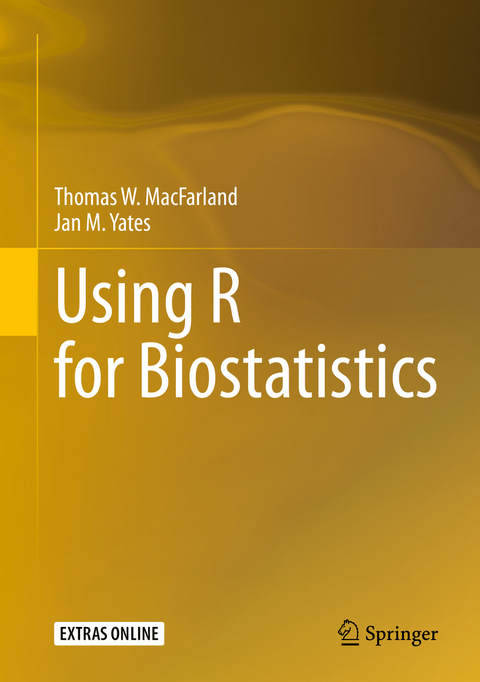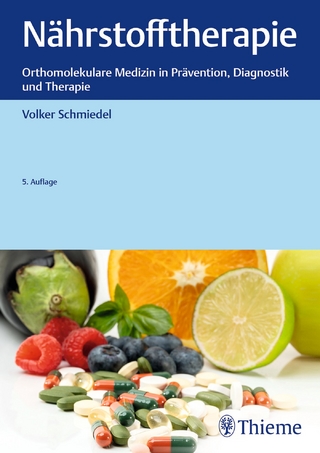
Using R for Biostatistics
Springer International Publishing (Verlag)
978-3-030-62403-3 (ISBN)
This book introduces the open source R software language that can be implemented in biostatistics for data organization, statistical analysis, and graphical presentation. In the years since the authors' 2014 work Introduction to Data Analysis and Graphical Presentation in Biostatistics with R, the R user community has grown exponentially and the R language has increased in maturity and functionality. This updated volume expands upon skill-sets useful for students and practitioners in the biological sciences by describing how to work with data in an efficient manner, how to engage in meaningful statistical analyses from multiple perspectives, and how to generate high-quality graphics for professional publication of their research.
A common theme for research in the diverse biological sciences is that decision-making depends on the empirical use of data. Beginning with a focus on data from a parametric perspective, the authors address topics such as Student t-Tests for independent samples and matched pairs; oneway and twoway analyses of variance; and correlation and linear regression. The authors also demonstrate the importance of a nonparametric perspective for quality assurance through chapters on the Mann-Whitney U Test, Wilcoxon Matched-Pairs Signed-Ranks test, Kruskal-Wallis H-Test for Oneway Analysis of Variance, and the Friedman Twoway Analysis of Variance.To address the element of data presentation, the book also provides an extensive review of the many graphical functions available with R. There are now perhaps more than 15,000 external packages available to the R community. The authors place special emphasis on graphics using the lattice package and the ggplot2 package, as well as less common, but equally useful, figures such as bean plots, strip charts, and violin plots.
A robust package of supplementary material, as well as an introduction of the development of both R and the discipline of biostatistics, makes this ideal for novice learners as well as more experienced practitioners.
lt;p>Thomas W. MacFarland, Ed.D., is Senior Research Associate (Office of Institutional Effectiveness) and Associate Professor (College of Computing and Engineering) at Nova Southeastern University, Fort Lauderdale, Florida. From his first experience with agricultural research as an Integrated Pest Management scout, Dr. MacFarland has been actively involved with research and statistical analyses for more than 40 years and has been a proponent for use of the R language since it first grew out of S.
Jan Yates, Ph.D., is Professor Emerita of Educational Media and Computer Science Education at Nova Southeastern University's Abraham S. Fischler College of Education in Fort Lauderdale, Florida. Since 2001, she has worked as associate professor and program professor in these content areas and in the areas of curriculum development, program assessment and review, and accreditation.
1 Introduction: Biostatistics and R.- 1.1 Purpose of this Text.- 1.2 Development of Biostatistics.- 1.3 Development of R.- 1.4 How R is Used in this Text.- 1.5 Import Data into R.- 1.6 Addendum1: Efficient Programming with R, Project Workflow, and Good Programming Practices (gpp).- 1.7 Addendum2: Preview of Descriptive Statistics and Graphics Using R.- 1.8 Addendum3: R and Beautiful Graphics.- 1.9 Addendum4: Research Designs Used in Biostatistics.- 1.10 Prepare to Exit, Save, and Later Retrieve this R Session.- 1.11 External Data and/or Data Resources Used in this Lesson.- 2 Data Exploration, Descriptive Statistics, and Measures of Central Tendency.- 2.1 Background.- 2.2 Import Data in Comma-Separated Values (.csv) File Format and/or Self Generate the Data Using R-Based Functions.- 2.3 Organize the Data and Display the Code Book.- 2.4 Conduct a Visual Data Check Using Graphics (e.g., Figures).- 2.5 Descriptive Statistics for Initial Analysis of the Data.- 2.6 Quality Assurance, DataDistribution, and Tests for Normality.- 2.7 Statistical Test(s).- 2.8 Summary.- 2.9 Addendum1: Specialized External Packages and Functions.- 2.10 Addendum2: Parametric v Nonparametric.- 2.11 Addendum3: Additional Practice Datasets for Data with Normal Distribution Patterns and Data That Do Not Exhibit Normal Distribution Patterns.- 2.12 Prepare to Exit, Save, and Later Retrieve this R Session.- 2.13 External Data and/or Data Resources Used in this Lesson.- 3 Student's t-Test for Independent Samples.- 3.1 Background.- 3.2 Import Data in Comma-Separated Values (.csv) File Format and/or Self Generate the Data Using R-Based Functions.- 3.3 Organize the Data and Display the Code Book.- 3.4 Conduct a Visual Data Check Using Graphics (e.g., Figures).- 3.5 Descriptive Statistics for Initial Analysis of the Data.- 3.6 Quality Assurance, Data Distribution, and Tests for Normality.- 3.7 Statistical Test(s).- 3.8 Summary of Outcomes.- 3.9 Addendum1: t-Statistic v z-Statistic.- 3.10 Addendum2: Parametric v Nonparametric.- 3.11 Addendum3: Additional Practice Datasets for Data with Normal Distribution Patterns and Data That Do Not Exhibit Normal Distribution Patterns.- 3.12 Prepare to Exit, Save, and Later Retrieve This R Session.- 3.13 External Data and/or Data Resources Used in this Lesson.- 4 Student's t-Test for Matched Pairs.- 4.1 Background.- 4.2 Import Data in Comma-Separated Values (.csv) File Format and/or Self Generate the Data Using R-Based Functions.- 4.3 Organize the Data and Display the Code Book.- 4.4 Conduct a Visual Data Check Using Graphics(e.g., Figures).- 4.5 Descriptive Statistics for Initial Analysis of the Data.- 4.6 Quality Assurance, Data Distribution, and Tests for Normality.- 4.7 Statistical Test(s).- 4.8 Summary of Outcomes.- 4.9 Addendum1: R-Based Tools for Unstacked (e.g. Wide) Data.- 4.10 Addendum2: Stacked Data and Student's t-Test for Matched Pairs.- 4.11 Addendum 3: The Impact of N on Student's t-Test.- 4.12 Addendum 4: Parametric v Nonparametric.- 4.13 Addendum5: Additional Practice Datasets for Data with Normal Distribution Patterns and Data That Do Not Exhibit Normal Distribution Patterns.- 4.14 Prepare to Exit, Save, and Later Retrieve This R Session.- 4.15 External Data and/or Data Resources Used in this Lesson.- 5 Oneway Analysis of Variance (ANOVA).- 5.1 Background.- 5.2 Import Data in Comma-Separated Values (.csv) File Format and/or Self Generate the Data Using R-Based Functions.- 5.3 Organize the Data and Display the Code Book.- 5.4 Conduct a Visual Data Check Using Graphics(e.g., Figures).- 5.5 Descriptive Statistics for Initial Analysis of the Data.- 5.6 Quality Assurance, Data Distribution, and Tests for Normality.- 5.7 Statistical Test(s).- 5.8 Summary of Outcomes.- 5.9 Addendum1: Other Packages for Display of Oneway ANOVA.- 5.10 Addendum2: Parametric v Nonparametric.- 5.11 Addendum3: Additional Practice Data Sets.- 5.12 Prepare to Exit, Save, and Later Retrieve This R Session.- 5.13 External Data and/or DataResources Used in this Lesson.- 6 Twoway Analysis of Variance (ANOVA).- 6.1 Background.- 6.2 Import Data in Comma-Separated Values (.csv) File Format and/or Self Generate the Data Using R-Based Functions.- 6.3 Organize the Data and Display the Code Book.- 6.4 Conduct a Visual Data Check Using Graphics (e.g., Figures).- 6.5 Descriptive Statistics for Initial Analysis of the Data.- 6.6 Quality Assurance, Data Distribution, and Tests for Normality.- 6.7 Statistical Test(s).- 6.8 Summary of Outcomes.- 6.9 Addendum 1: Other Packages for Display of Twoway ANOVA.- 6.10 Addendum 2: Parametric v Nonparametric.- 6.11 Addendum 3: Additional Practice Data Sets.- 6.12 Prepare to Exit, Save, and Later Retrieve This R Session.- 6.13 External Data and/or Data Resources Used in this Lesson.- 7 Correlation, Association, Regression, Likelihood, and Prediction.- 7.1 Background.- 7.2 Import Data in Comma-Separated Values (.csv) File Format and/or Self Generate the Data Using R-Based Functions.- 7.3 Organize the Data and Display the Code Book.- 7.4 Quality Assurance, Data Distribution, and Tests for Normality.- 7.5 Statistical Test(s).- 7.6 Summary of Outcomes.- 7.7 Addendum 1: Multiple Regression.- 7.8 Addendum 2: Likelihood and Odds Ratio.- 7.9 Addendum 3:Parametric v Nonparametric.- 7.10 Addendum 4: Additional Practice Data Sets.- 7.11 Prepare to Exit, Save, and Later Retrieve This R Session.- 7.12 External Data and/or Data Resources Used in this Lesson.- 8 Working with Large and Complex Datasets.- 8.1 Background.- 8.2 Import Data in Comma-Separated Values (.csv) File Format and/or Self Generate the Data Using R-Based Functions.- 8.3 Organize the Data and Display the Code Book.- 8.4 Conduct a Visual Data Check Using Graphics (e.g., Figures).- 8.5 Descriptive Statistics for Initial Analysis of the Data.- 8.6 Quality Assurance, Data Distribution, and Tests for Normality.- 8.7 Statistical Test(s).- 8.8 Summary of Outcomes.- 8.9 Addendum1: Additional Graphics, to Show Relationships Between and Among Data.- 8.10 Addendum2: Graphics Using the lattice Package.- 8.11 Addendum3: Graphics Using the ggplot2 Package.- 8.12 Addendum 4: Beyond an Introduction to R - Use the tidyverse to Create Subsets of Original Datasets.- 8.13 Prepare to Exit, Save, and Later Retrieve This R Session.- 8.14 External Data and/or Data Resources Used in this Lesson.- 9 Future Actions and Next Steps.- 9.1 Use of This Text.- 9.2 R and Beautiful Reporting with R Markdown.- 9.3 Future Use of R for Biostatistics.- 9.4 Big Data and Bio Informatics.- 9.5 External Resources.- 9.6 Contact the Authors.
"The strengths include the ideal analysis containing both graphical and statistical output as well as a variety of datasets ... . the authors provide a number of R packages for obtaining the same results, such as graphics or statistics output. ... Each chapter is so complete that it can be read in any order; learned readers will probably jump back and forth between the chapters. This book can be used for self-learning or teaching purpose on the subject." (Shu-Hui Wen, Biometrics, Vol. 78 (2), July, 2022)
“The strengths include the ideal analysis containing both graphical and statistical output as well as a variety of datasets … . the authors provide a number of R packages for obtaining the same results, such as graphics or statistics output. … Each chapter is so complete that it can be read in any order; learned readers will probably jump back and forth between the chapters. This book can be used for self-learning or teaching purpose on the subject.” (Shu-Hui Wen, Biometrics, Vol. 78 (2), July, 2022)
| Erscheinungsdatum | 06.04.2021 |
|---|---|
| Zusatzinfo | XXXV, 902 p. 300 illus., 265 illus. in color. |
| Verlagsort | Cham |
| Sprache | englisch |
| Maße | 178 x 254 mm |
| Gewicht | 1942 g |
| Themenwelt | Mathematik / Informatik ► Mathematik ► Wahrscheinlichkeit / Kombinatorik |
| Studium ► Querschnittsbereiche ► Prävention / Gesundheitsförderung | |
| Weitere Fachgebiete ► Land- / Forstwirtschaft / Fischerei | |
| Schlagworte | ANOVA • association • Biostatistics • Correlation • Data Organization • descriptive statistics • Friedman two-way analysis of variance • Kruskal-Wallis • Mann-Whitney U test • measures of central tendency • nonparametric sata • one-way analysis of variance • parametric data • Pearson's R • Regression • R software • Spearman's Rho • S software • t-Test • Wilcoxon matched-pairs signed-ranks test |
| ISBN-10 | 3-030-62403-X / 303062403X |
| ISBN-13 | 978-3-030-62403-3 / 9783030624033 |
| Zustand | Neuware |
| Haben Sie eine Frage zum Produkt? |
aus dem Bereich


